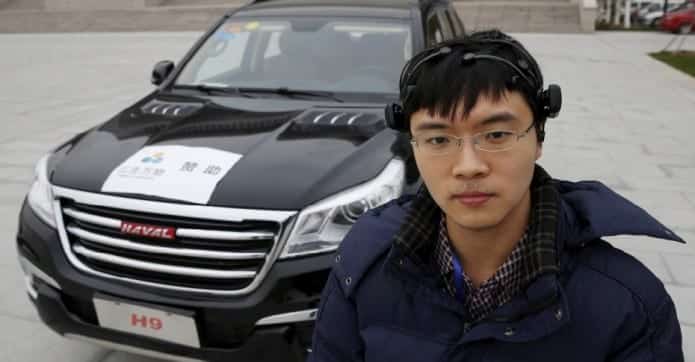Chinese researchers unveil a car that can be controlled by brain
Researchers in the northeast port city of Tianjin have developed China’s first mind-controlled car that uses only brain power to drive and nothing else. It has taken two years for the research team from Nankai University, in the north-eastern Chinese port city of Tianjin to convert the mind-controlled vehicle into reality.
The driver can control the car by just wearing brain signal-reading equipment that can be used to make the car to go forward, or backwards, or come to a stop, and both lock and unlock the vehicle, all without moving their hands or feet.
Speaking to Reuters, Zhang Zhao told that the equipment is made up of 16 sensors that capture EEG (electroencephalogram) signals from the driver’s brain. A computer program has been developed by the team that chooses the relevant signals and translates them, which helps in the controlling of the car.
“The tester’s EEG signals are picked up by this (brain signal-reading) equipment and transmitted wirelessly to the computer. The computer processes the signals to categorize and recognize people’s intention, then translates them into control command to the car. The core of the whole flow is to process the EEG signals, which is done on the computer,” said Zhang.
The project which was led by Associate Professor Duan Feng, from the university’s College of Computer and Control Engineering stressed that the technology is targeted to give better service to human beings, and very soon it may become possible to combine brain controlled technology and driverless cars, such as the Google Self Driving Car (SDC).
“Driverless cars’ further development can bring more benefits to us, since we can better realize functions relating to brain controlling with the help of the driverless cars’ platform,” said Duan. “In the end, cars, whether driverless or not, and machines are serving for people. Under such circumstances, people’s intentions must be recognized. In our project, it makes the cars better serve human beings.”
The worries about the driver being distracted leading to potential road accidents while their brain was in control of his team’s car were found baseless, as concentration is required only when changing the vehicle’s moving status, i.e. turning or changing lanes. Whether such an application would be enough for the drivers to believe to get behind the wheel and control a car with their mind has raised doubts on it though.
According to the researchers, the thought of helping physically disabled people to steer cars led to the idea being developed.
“There are two starting points of this project. The first one is to provide a driving method without using hands or feet for the disabled who are unable to move freely; and secondly, to provide healthy people with a new and more intellectualized driving mode,” Zhang said.
Currently, the car is being built in association with Chinese car manufacturer Great Wall Motor. There is one problem though, the vehicle can only drive in a straight direction. Also, as of now, there are no plans to put the vehicle into production.

